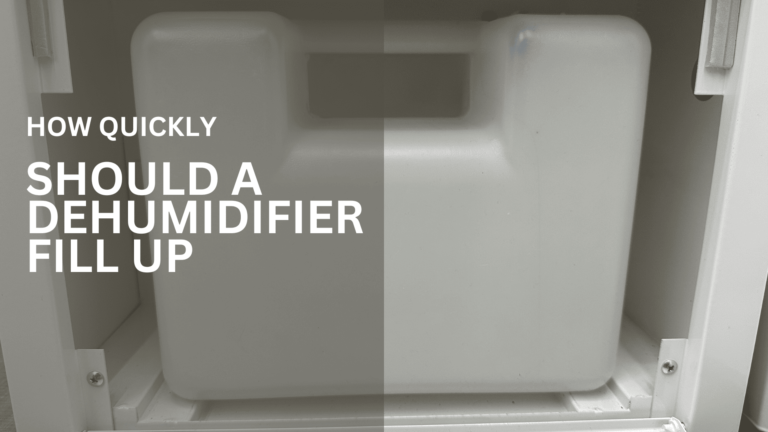A desiccant dehumidifier has an advanced design to remove moisture from the air. The statistics suggest that it is a perfect pick for controlling humidity in various environments. Desiccant materials are used to absorb water and suck it out of the room. It will work even in colder spaces where condensation-based models struggle. Let’s rush underneath to the main details.

What is a Desiccant Dehumidifier?
A desiccant dehumidifier involves a smart way to keep your space dry. The dominant moisture in the air is expelled using a special material called a desiccant. This material loves to soak up water, which is why the dehumidifier gets its name.
Besides, a desiccant dehumidifier works perfectly in their service even in chilly temperatures, while traditional dehumidifiers struggle in these circumstances. All this work will be handled with cheaper energy costs and even lower HVAC installation.
Silica gel mostly rides first as the main choice as a desiccant material in a dehumidifier. It is reliable, effective, and gets the job done. Pick the right desiccant dehumidifier in order to protect your low-temperature place from condensation or dampness.
Does a Desiccant Dehumidifier Work?
A desiccant dehumidifier can also be named as a moisture magnet. The clever device can perfectly battle the humidity issue in your workspace. Let’s get to know the whole desiccant dehumidifier working process in detail.
Step 1: Sucking in the Air
First, the dehumidifier pulls in air using a rotating wheel. This wheel is coated with a desiccant material, usually silica gel. It is the same thing that you often see in shoeboxes. But it is used on a bigger scale for the desiccant dehumidifier.
Step 2: Absorbing Moisture
The silica gel reveals itself to suck in the moisture as the air moves through the wheel. The highly absorbent property comes into work here. Besides, silica gel is also available in many forms so it is easier to work on.
Step 3: Regeneration Cycle
Once the desiccant material is full of water, it’s time to let go. The dehumidifier gently heats the wheel, releasing the trapped moisture on the other end. It reports the exit of the unwanted moisture from your room.
Step 4: Continuous Process
The cycle repeats as long as required. Air comes in, moisture gets absorbed, and water is released during regeneration. This keeps your space dry and comfortable without breaking a sweat.

Why Are Desiccant Dehumidifiers Important?
Desiccant dehumidifiers are a great pick for effective moisture control. They stand out where traditional dehumidifiers fall short. In this section, you will get to know some of the key importance of desiccant dehumidifiers. Let’s take a closer look.
Work in Cold Temperatures
Desiccant dehumidifiers behave the same even in low temperatures. Traditional dehumidifiers often freeze up in low temperatures, but desiccant dehumidifiers thrive. This quality makes it perfect for cold storage.
Industrial Dehumidifier
These dehumidifiers are essential for industries that need super-dry air. Semiconductors, food processing, and pharmaceuticals use them for their factories. In these facilities, even a little moisture can ruin products or disrupt processes. Besides, you are also going to see their use in other industries like electronics, aerospace, and automotive manufacturing.
Achieve Very Low Humidity
If you need exceptionally low relative humidity, these machines deliver. They can create environments with almost no moisture. This kind of behavior is often required for precision manufacturing and storage facilities.
Low Maintenance, No Freezing Issues
Refrigerant dehumidifiers are also seen in use at the industrial level. But they have a freezing problem. In solution, a desiccant dehumidifier does serve to save time and money when you have the ask for a dehumidifier at a very low temperature and with minimal maintenance.
Real Applications of Desiccant Dehumidifiers
Desiccant dehumidifiers step in with various application promises. They can prove worth the investment in many different ways. I will narrate to you some key applications of the desiccant dehumidifier.

Sensitive Product Drying
In pharmaceuticals, electronics, and food production industries, moisture is a big obstacle to product safety. But these dehumidifiers assist in keeping the air dry. In this process, they close the disturbance in the quality of the products.
Industrial Humidity and Temperature Control
Desiccant dehumidifiers excel at controlling humidity even in cold conditions. Regular dehumidifiers will struggle in this situation. Besides, desiccant dehumidifier includes more precision control for specific environmental conditions.
Preservation
Humidity can confront and ruin priceless items. Museums use desiccant dehumidifiers to protect historical documents, paintings, and artifacts. You are also going to see their benefits for vintage car storage. Industrial machinery also needs desiccant dehumidifiers for their corrosion safety.
Construction
Drying plaster and concrete takes time. However, desiccant dehumidifiers have the feature to speed up the process. Faster drying ends up promising better finishing and higher-quality work. Builders love desiccant dehumidifiers for keeping projects on schedule.
Storage
Humidity wreaks havoc in unheated spaces like garages, basements, and big workshops. Desiccant dehumidifiers keep stored items safe. They effortlessly take out the moisture from the air even in low temp and keep the storage goods safe.
Tips for Selecting the Right Desiccant Dehumidifier
Gaining access to the right desiccant dehumidifier can be tough without the right guide. It is all about matching your needs with the features a desiccant dehumidifier has to offer. Let’s take a look at the tips for selecting the right desiccant dehumidifier.
- The desiccant dehumidifier extraction rate is between 5 to 10 liters a day, the higher the better.
- A regular desiccant dehumidifier will cover from 270 to 1,000 square feet.
- You need to look for models from 20 kg/h to 2000 kg/h, depending on the job.
- A cleaner and drier air filtration combo is always a win.
- It should come with a drain hose for continuous water removal.
- An Energy Star-rated desiccant dehumidifier model saves you money in the long run.
Conclusion
You already have a clear idea of what a desiccant dehumidifier is. They are a reliable solution for moisture control in cold temperatures. Besides, they also assure a low humidity level with precision compared to other options in hand. A desiccant dehumidifier can be a smart investment for long-term humidity management. Keep coming back for more updates shortly.





